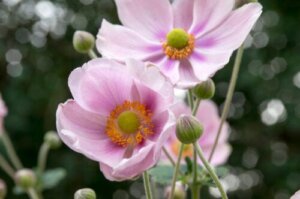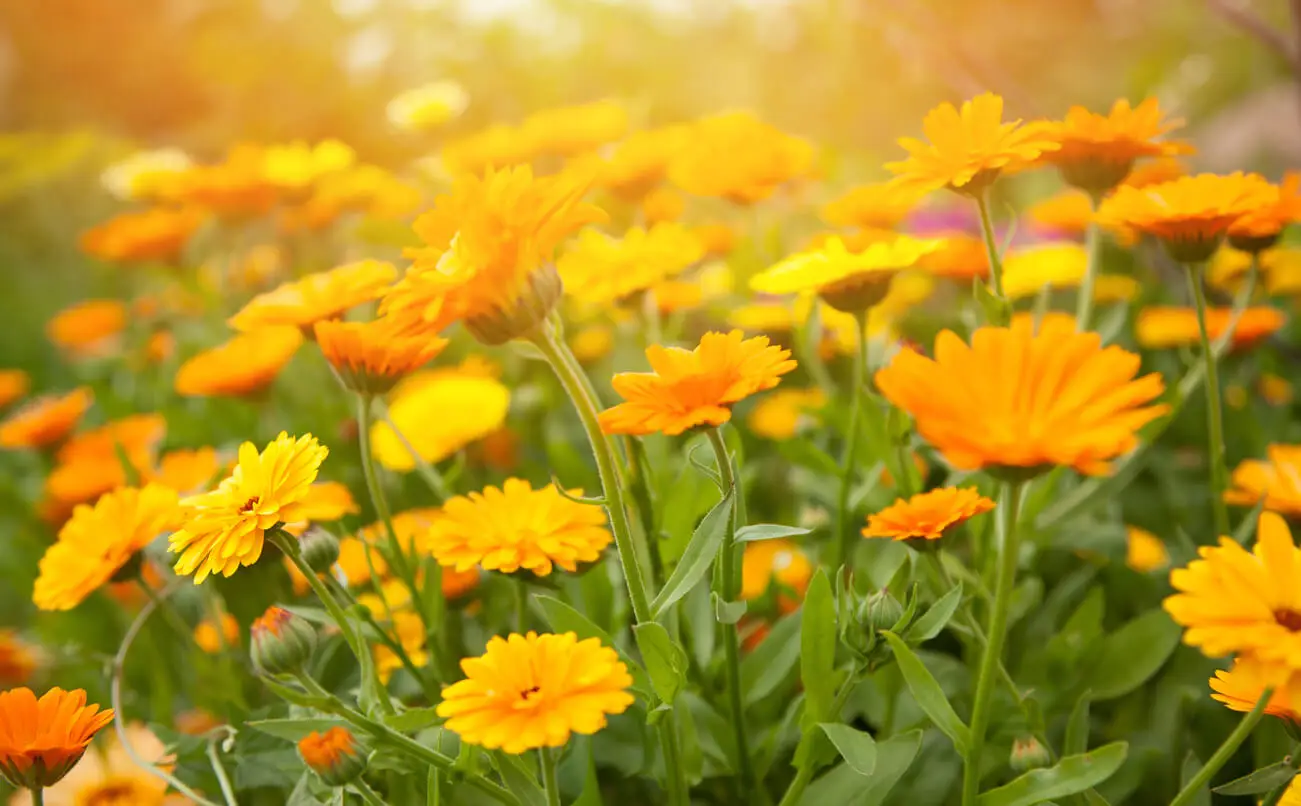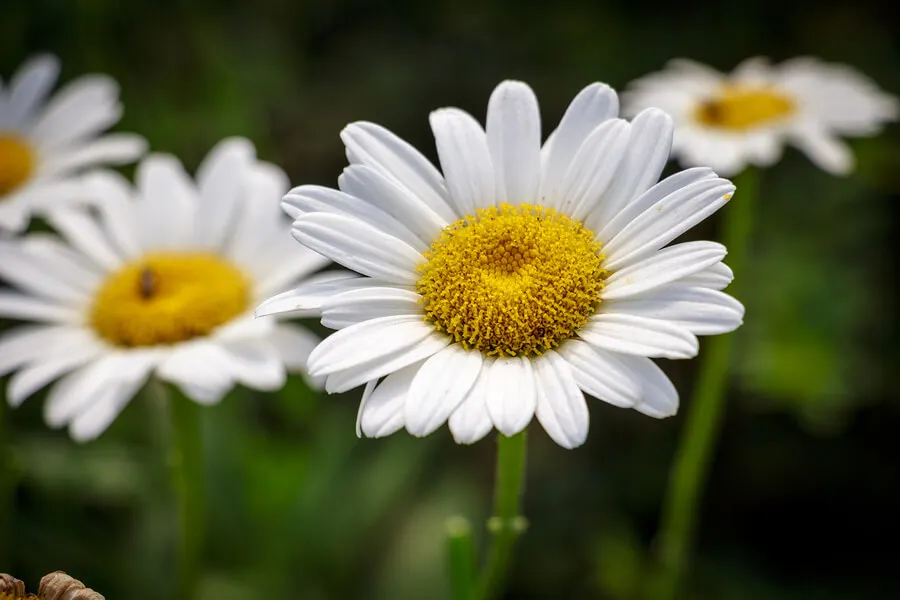Check Out These 10 Garden Plants that Bloom in Autumn

The season most identified with blossoming, colors, and gardens in splendor is the spring. Meanwhile, autumn is often imagined as a season of gray clouds, cold weather, and fallen leaves. However, it’s also an opportunity to see a number of garden plants that bloom in autumn grow.
Sunflowers, tulip trees, and marigolds are just a few examples of the many flowers that can adorn your garden and also bloom in this cold season. Just try to start planting them in spring or summer so that they will be well established in the following period.
Why choose garden plants that bloom in autumn?
Many people believe that terraces, balconies, or gardens can only be at their most colorful in the spring and summer. Although the majority – or at least a very good part of vegetation – has the warm period of the year as its period of greatest foliage, there are also specimens that bloom in autumn.
In this way, it’s possible to achieve outdoor spaces with golden, purple, or reddish colors that combine perfectly with autumn’s gray and rainy skies. In fact, it’s even these conditions that reinforce the growth of some specimens that better withstand humidity.
Not only can you keep the vegetation healthy and growing, but also encourage the appearance of colorful flowers. Believe it or not, some even prefer the colder seasons.
We think you may also enjoy reading this article: 13 Indoor Hanging Plants to Decorate Your Home
The best garden plants that bloom in autumn
Autumn landscapes need not be linked only with nostalgia, dry trees, and empty gardens. By planting the following specimens during the spring or summer, it’s possible to welcome the cooler seasons of the year with the same level of color.
1. Caryopteris
The genus Caryopteris, better known as “blue mist shrub,” is a perennial specimen that’s well suited to a fall garden. Its small, aesthetic blue flowers will most likely begin to appear in early fall.
To keep this shrub in its best condition, moist soil, some shade, and pruning in the spring are necessary.
2. Sunflowers
A well-known plant in large open fields is the Helianthus or sunflower. Its colorful flowers reach a large size and the stems can exceed three meters in height.
However, there are smaller specimens that are adaptable to gardens or terraces. They bring yellow and orange tones to the environment. As their name suggests, they should receive full sun.

3. New York aster
The genus Symphyotrichum, also known as “New York aster” or “starry sky,” is a plant that flowers like daisies. The result is a cluster of refined flowers that can take on shades of white, pink, or violet.
They require a good amount of sunshine and well-drained soil. Flowering usually begins in late summer and remains through the fall.
4. Tulip trees are one of the best fall-blooming garden plants
Liriodendron tulipifera, or the tulip tree, has a particular characteristic. When its flower is closed, the resemblance to the tulip is evident, and hence its name.
However, everything changes when it opens, as it forms a large mouth. During autumn, this plant offers beautiful reddish and orange tones. As for its care, it requires plenty of moisture and lots of sun.
5. Russian sage
Although its scientific name is Perovskia atriplicifolia, it’s known as “Russian sage” or “salvia yangii.” It’s a specimen with lavender-colored flowers, which appear in late summer.
To promote optimal growth, it’s important to prune it at the end of winter, with the aim of reaching the next season in full color. Russian sage needs full sun exposure.
6. Marigolds
Marigolds have the great advantage of withstanding different temperatures, so their growth is possible during the cold months. Belonging to the Asteraceae family, this specimen stands out for its colorful flowers in yellow and orange tones. They bring a unique brightness to the garden.

7. Pansies
One of the garden plants that bloom in autumn is the pansy, a hybrid and ornamental specimen that brings a variety of colors. They’re small since they don’t usually exceed 25 centimeters in height.
They offer a group of showy flowers with white, pink, or violet petals. They require good natural lighting and nutritious soil, so fertilizer application is recommended.
8. Japanese anemone
Another somewhat more exotic specimen is the Anemone hupehensis or Japanese anemone (the flower that’s featured in the cover photo), whose pink or white flowers are combined with yellow stamens. This plant requires a bit more shade to grow, so it’s common to place it under larger plants. These flowers are also great for attracting butterflies to the garden.
9. Daisies
Bellis perennis, better known as “daisy,” is one of the most popular plants that bloom in autumn, not only for its decorative flowers, but also for its scent and color.
Daisy beauty is easy to achieve, as these flowers have a wild growth that requires minimal care. They withstand harsh climates and low temperatures, making them ideal for adorning gardens in winter.

10. Hydrangeas
The hydrangea is ideal for the cold season because it just needs a few hours of shade to bloom. Fall and winter are characterized by less time in the sun, something that favors hydrangea growth.
With its large, wide clusters, this plant floods gardens with purple, pink, or lilac flowers. In addition, it adapts well to soil and pots, which makes it optimal for terraces.
Like this article? You may also like to read: How to Use Neem Oil to Look After Your Garden Plants
Care for garden plants that bloom in autumn
For the specimens mentioned above, as for any plant, care changes with the arrival of the cold season. Keeping vegetation in the best condition during autumn and winter involves changing the fertilizer and taking care to protect the roots from frost.
In addition, for some plants, it’s necessary to protect them indoors. However, this season is also a time to take advantage of the cooler temperatures and to water less frequently.
All cited sources were thoroughly reviewed by our team to ensure their quality, reliability, currency, and validity. The bibliography of this article was considered reliable and of academic or scientific accuracy.
- Chaar, Javier Emilio Temperaturas previas y aclimatación en yemas florales de duraznero [Prunus persica (L.) Batsch.] expuestas a congelación Avances en Investigación Agropecuaria, vol. 22, núm. 2, 2018 Universidad de Colima, México Disponible en: https://www.redalyc.org/articulo.oa?id=83757609003
- dos-Santos J. B, Marenco-Centeno C. R, Vieira de-Azevedo C. A, Raj-Gheyi H, Soares de-Lima G, , de-Lira V. M. CRECIMIENTO DEL GIRASOL (Helianthus annuus L.) EN FUNCIÓN DE LA SALINIDAD DEL AGUA DE RIEGO CON FERTILIZACIÓN NITROGENADA. Agrociencia [Internet]. 2017;51(6):649-660. Recuperado de: https://www.redalyc.org/articulo.oa?id=30252708005
- Garcia M. D, , De La Peña C. Respuesta a la fertilización de otoño en plantaciones de eucalipto en Entre Ríos. Quebracho – Revista de Ciencias Forestales [Internet]. 2013;21(1-2):16-25. Recuperado de: https://www.redalyc.org/articulo.oa?id=48130000003
- Hariri, Muhammad Rifqi et al. “EFFECT OF SOIL PH ON THE ANTHOCYANIN LEVEL OF HORTENSIA (Hydrangea Macrophylla).” KnE Life Sciences 2.1 (2015): 613. Disponible en: https://doi.org/10.18502/kls.v2i1.228
- Kishimoto, Sanae et al. “Analysis of Carotenoid Composition in Petals of Calendula (Calendula Officinalis L.).” Bioscience, Biotechnology and Biochemistry 69.11 (2005): 2122–2128. Disponible en: https://doi.org/10.1271/bbb.69.2122
This text is provided for informational purposes only and does not replace consultation with a professional. If in doubt, consult your specialist.








